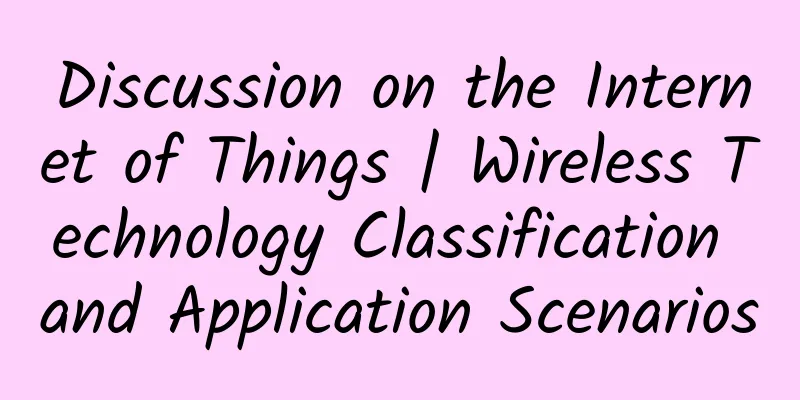Ten areas you must know about 5G

|
The development of 5G is in full swing, and it can even be said that all roads lead to 5G. The actual situation is that it will take at least one year for 5G standards and even commercial deployment. As mobile cloud printing and industry giants begin to promote 5G trial technology, some features and functions of 5G have attracted widespread attention in the industry. Obviously, 5G is not just the so-called next generation in the process of mobile networks. On the contrary, it is a huge change in the popular network and business model in the mobile industry. As 5G becomes a reality, we compiled a list of 5G technology-related fields, standard organizations, and proprietary terms: 1. 4G LTE 4G LTE is the current network infrastructure, which has been widely adopted and applied worldwide. Before the emergence and full implementation of 5G standards, the current 4G LTE infrastructure is crucial to the evolution and functionality of future 5G networks. In the past, the network transition from 1G-2G-3G-4G was basically a new network construction, but in the upcoming 5G field, 4G LTE will still be the hotbed for its implementation. However, since the current LTE network is being pushed into the technology category, there will be a comprehensive transition.
2. 3GPP 5G is coming soon, but there is still no unified standard. 3GPP is one of the 5G standard setters. 3GPP is the mobile industry standards body and will submit proposed specifications to the International Telecommunication Union (ITU), which will publish the final standard, also known as IMT-2020. 3GPP has 7 telecommunications standards development organizations under its umbrella and oversees all cellular telecommunications network technologies. Mobile operators and manufacturers are participating in the formulation of standards through 5G trials. Due to industry pressure, 3GPP will complete the first 5G non-standalone air interface specification by December 2017. 3. Cloud Radio Access Network (cRAN) Cloud Radio Access Network (cRAN) is an architecture for future cellular networks. The premise of its deployment is network virtualization. cRAN will transfer the baseband processing currently connected to the wireless to the cloud. Mobile resources will be concentrated on the RAN in the cloud, making mobile connections more efficient. This move will promote the transition of broadband processing, migrating broadband processing currently on the RAN to the cloud, improving performance and reducing operating costs. Early tests by Verizon and Nokia have shown that the architecture can provide the same level of service as 4G LTE, while also meeting the needs of network throughput, capacity and elasticity, and with greater flexibility and scalability. Verizon and Nokia are not the only companies promoting cRAN. NEC has now established a cRAN product line, and Ericsson has also announced a cRAN product called Elastic RAN. 4. Network Edge The network edge is the most dynamic part of the network, where programmability makes it easier to control workloads at the network edge. The flexibility of adding computing at the network edge makes it ideal for multiple uses, allowing providers to move and offload on demand and scale and test new services in real time more easily and efficiently when needed. When 5G applications are pushed to the edge of the network, applications will run faster due to physical contact with users. Edge computing is also known as multi-access edge computing (MEC), and the distinction between the two is becoming increasingly blurred. MEC is a cloud-based IT service environment that runs at the edge of the network, enabling operators to improve performance and connectivity at the edge. 5. Network Slicing Network slicing is one of the core technologies for 5G implementation. It refers to segmenting a single network to make the network dynamic. This technology is critical to 5G, enabling it to support multiple use cases and new services. Based on the needs of specific use cases or market segments, network slicing will enable operators to allocate speed, capacity, and coverage by creating logical fragments of a single network. The application of network slicing is like putting users on separate networks, except that there will be multiple virtual networks in a shared physical infrastructure. However, reports show that the initial 5G deployment will not use 5G slicing technology. 6. Millimeter wave Millimeter wave (mmWave) is a spectrum with a frequency between 30 GHz and 300 GHz. Today, 4G LTE uses spectrum below 6 GHz. The need for millimeter wave spectrum for 5G is mainly because the current wireless spectrum is very narrow. As more and more data is transmitted on wireless networks, service speeds decrease and connection packet loss rates rise sharply. 5G networks that use millimeter waves will be able to achieve extremely fast 5G transmission speeds due to the higher frequencies of millimeter waves. A major disadvantage of millimeter wave spectrum is its short propagation range and difficulty passing through buildings or obstacles. A new technology, small cells, will play an important role when using millimeter wave spectrum instead of traditional cellular towers. 7. Micro Base Station 5G requires a larger scale of infrastructure than what is currently available for 4G LTE infrastructure, and to achieve this, engineers have developed portable mini base stations, or micro cells. Micro cells are less powerful and can be placed every 250 meters in cities to create dense, flexible networks. Millimeter wave spectrum requires smaller antennas, so they are less obtrusive than traditional antennas, but provide more targeted and effective spectrum. However, while the portability of micro cells makes them ideal for urban environments, they are difficult to implement in non-urban areas because the number required is too large. 8. Unlicensed Spectrum In March this year, 3GPP promoted the research on 5G wireless optical spectrum segments and millimeter wave spectrum led by Qualcomm, which the FCC named as license exemption. Users do not need the FCC's license to operate within this spectrum range. When it is introduced into the 5G field, it will provide greater capacity, better spectrum use and unique deployment scenarios, mainly because the technology supports a wide range of use cases without the need for relevant licenses. Although 5G may not operate only on unlicensed spectrum, the pairing of licensed and unlicensed spectrum will enable mobile operators to provide more capacity and bandwidth, allowing consumers to enjoy the high-speed transmission brought by 5G. 9. Use Cases One of the reasons why the definition of 5G has been unresolved for so long is that 5G use cases are very broad, and the massive growth in mobile networks requires areas ranging from video streaming to virtual reality to driverless cars, which requires 5G to have higher transmission speeds. Commercial use cases and trials for 5G include video streaming, solving video traffic problems and virtual reality, and 5G operators are conducting additional tests and trials. 10. Virtual Radio Access Network (vRAN) Virtual Radio Access Network (vRAN) involves virtualizing the functions in the RAN, separating the functions from the traditional remote radio unit or base station and running them as virtual network functions. This will reduce the total cost of ownership and improve performance and scalability. Before 5G standardization, the deployment of vRAN will enable mobile operators to face future developments in order to better predict the development of 5G. |
>>: Fault recovery and resource allocation in software-defined optical networks
Recommend
What are the main reasons why enterprises turn to fiber optic networks?
The invention of fiber optic cables has revolutio...
Maxthon Hosting 20% off: Los Angeles Triple Network CN2 GIA Line Monthly Payment Starting from 54 Yuan, 2G Memory/30G SSD/100M Bandwidth
Aoyozhuji is a long-established foreign VPS servi...
RAKsmart: 35% off all VPS hosting, monthly payment starting from $1.95, CN2/AS9929 available in US/Japan/Korea/Hong Kong/Germany data centers
RAKsmart provides VPS hosts with 35% discount and...
AkkoCloud: US/Germany/UK CN2 GIA line VPS annual payment starts from 299 yuan, 300-600M large bandwidth
AkkoCloud has launched a large number of VPSs in ...
iWebFusion: $99/month - Dual E5-2670, 128G memory, 500G SSD hard drive, 20TB monthly traffic, 5 data centers including Los Angeles
I have shared iWebFusion many times in my blog. I...
Huawei Cloud EI focuses on three basic research innovations to help industries upgrade to intelligence
On July 27, Huawei Cloud held the TechWave AI Day...
my country will promote 5G national standards in 2017 to speed up research and development and seize the right to speak in the industry
[[181162]] At the arrival of the new year, China&...
A glimpse of the "treasure" in the tube: the last piece of cake for operators
Global Internet giants are accelerating their pen...
How Apple's iCloud Private Relay powers enterprise VPNs
Apple's iCloud Private Relay service offers p...
What is the use of computing power, which has been so popular recently?
"In any method of calculation, you must firs...
2018 China Enterprise Digital Transformation Seminar was held, Ruijie helped enterprises break through digital transformation
On August 24, the 2018 China Enterprise Digital T...
South Korea's 5G penetration rate is close to 10%, 14 times that of China, and the United States' 5G penetration rate is 0.63%.
The Ministry of Science and ICT of South Korea re...
Manufacturers begin to correct mistakes, is 5G adjusting its direction?
It has been more than two years since the country...
Learn more about load balancers
Every load balancer is a reverse proxy, but not e...
Is SD-WAN coming to take away the jobs of operations and maintenance personnel?
Nowadays, SD-WAN (Software Defined Wide Area Netw...









